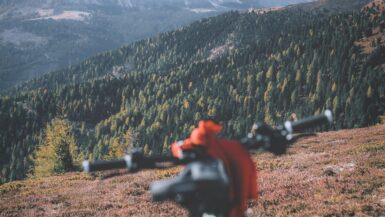Are you ready for your next mountain bike tour but don’t know where to start? Planning the best route for a mountain bike tour can be daunting, but with some know-how and preparation, you can create a memorable, challenging, and rewarding ride. Whether you are an experienced mountain biker or new to the sport, this article will provide tips and tricks to help map out an incredible mountain bike tour.
Gather Necessary Information
When planning a mountain bike tour, one of the most important steps is to choose the correct route. Start by researching the area you plan to explore for potential trails and roads. Many great online resources and maps can provide information regarding a trail’s difficulty level and length. Consider your skill level and experience when selecting a route and the time you have available to complete the tour.
Consider the Terrain
The terrain of a mountain bike tour should be considered when selecting a route. Make sure that the course is suitable for your skill level. Are there any large hills or difficult obstacles that you’ll need to overcome? Make sure to factor in the weather conditions when planning your tour, as some routes may be too challenging to complete in wet or stormy weather.
Safety is Key
It’s essential to plan your mountain bike tour with safety in mind. Make sure you understand the local laws, rules, and regulations regarding mountain biking in the area. If you are unfamiliar with the site, enlist the help of someone with experience in the terrain. Consider carrying a first aid kit and emergency supplies for unexpected events.
Plan for Adequate Time
When planning your mountain bike tour, it’s essential to factor in enough time to rest and recuperate. Make sure the route you select is long enough to complete within the allotted time but not so long that you risk fatigue or injury. Doing a few shorter tours with fewer miles can be a good option if you don’t have much time available.
Think About Accommodations
Finally, consider where you will be staying during your mountain bike tour. Research potential campsites, hotels, or other accommodations that suit your budget. You can often find great deals for multi-night stays at hotels and motels, but make reservations early to secure the best rates.
Consider Terrain, Distance, and Your Experience Level
When planning a mountain bike tour, it is essential to consider the challenge level of the terrain, distance, and your experience level. By assessing these factors, you can ensure your bike tour is safe and enjoyable.
Choose the Right Terrain
Choosing suitable terrain for your bike tour is essential for ensuring a safe and enjoyable trip. The terrain for your mountain bike tour should be appropriate for your experience level. If you are a beginner, starting on easy trails that offer plenty of opportunities for rest and shortcuts is best. An experienced rider can select more challenging terrain, such as technical single-track or high-elevation trails.
Assess Distance
The distance of your route is essential to consider when creating your mountain bike tour. If you are a beginner, starting with shorter courses of 10 miles or less is best. Experienced riders can handle longer and more challenging routes up to 30 miles or more.
Take Experience Level into Account
Your experience level is essential when choosing the best route for your mountain bike tour. If you are a beginner, it is best to start with shorter, less challenging ways. As you gain experience, you can tackle longer and more technical routes.
Safety Precautions
Safety is an essential factor to consider when planning any mountain bike tour. Wear a helmet and other safety gear like elbow and knee pads. Consider carrying a first-aid kit and other essential supplies in case of emergency. Also, be aware of any wildlife in the area and the risk of inclement weather.
Choose Your Route
Before you start planning your mountain bike tour route, gathering enough information about the tour is vital. This includes the location, distance, terrain, and climate of the area. This can help you decide the best route to take, as well as the difficulty of the ride.
Consult Maps and Websites
Consulting maps and websites can help you plan the route of your mountain bike tour. A good map can show you the up and down hills, the type of terrain, and any obstacles you might encounter. Websites like Google Maps are great for finding popular mountain bike trails and getting directions.
Plan for Safety
When choosing your mountain bike tour route, you need to plan for safety. Make sure to pick a course that is suitable for your skill level. Research the area for hazards like narrow trails, steep inclines, and sections that may be too difficult for your skill level.
Think About Other Factors
Apart from skill level and safety, there are many other factors to consider when choosing the route of your mountain bike tour. Think about the time of year and the amount of daylight available; if it’s winter or nighttime, it will be harder to tell the terrain, and you’ll need to take extra safety precautions. Also, consider the weather, as it can affect the landscape’s difficulty and the trails’ condition.
Make It an Enjoyable Experience
When choosing your route, make sure it’s enjoyable. Consider the sights you’ll see, any stops you’d like to make, and any activities you’d like to do along the way. Incorporate different terrains and activities like swimming, kayaking, or even camping overnight to make the journey more enjoyable.
Prepare for Unexpected Roadblocks
Planning the best route for a mountain bike tour requires considering the potential terrain hazards you may encounter. Consider the elevation, surface quality, and geography of the area. Are there steep grades or obstacles? Is the terrain easy to traverse or rugged and unpredictable? Knowing the answers to these questions beforehand can help you plan the most efficient and safe route.
Check the Weather Forecast
In addition to terrain hazards, it is vital to check the weather forecast before planning a mountain bike tour. Unexpected rain or snow can make trails muddier, slippery, and more difficult to navigate. Strong wind gusts can also make pedaling more challenging, so double-check the forecast for the days you will be riding.
Pack the Necessary Supplies
Making sure you have the necessary supplies can help you prepare for unexpected roadblocks. Pack extra water and snacks, a repair kit, a phone, a flashlight or headlamp, and a first aid kit in emergencies. Consider bringing a map and compass as well, in case you need to find an alternate route.
Research the Rules and Regulations
Before embarking on a mountain bike tour, research the area’s rules and regulations. Are there certain days or times that you should avoid specific trails or paths? Are there any wildlife regulations or tracks that are closed off? Knowing the rules and regulations beforehand can help you plan the best route for your tour.
Check for Road Construction
Before planning a mountain bike tour, check for any road construction or other projects. You may need to create an alternate route if a particular way is blocked off. Checking for potential roadblocks beforehand can help you plan the most efficient route for your tour.
Alert Friends and Family
Before planning a mountain bike tour, it is crucial to alert friends and family of your plans. Let them know where you are going, your route, and when you plan to return. This can help them be prepared in case anything goes wrong and they need to call for help.
Pack the Essential Gear
Planning a mountain bike tour is an exciting endeavor, but you must ensure that you are prepared for the trip. Gather the necessary gear for a successful ride, and pack accordingly.
Select the Right Bike for the Tour
The right bike is essential for a successful mountain bike tour. Consider the terrain you will be riding on and select a mountain bike suited for the conditions. Look for a bike with a strong front and rear suspension frame, as this will give you more control over the ride.
Protect Yourself with Safety Gear
No matter how experienced you are, it is vital to equip yourself with the appropriate safety gear. Helmets and gloves are critical pieces of equipment that will prevent injury in the event of a crash. Make sure your helmet fits properly and is certified for use. If you plan to ride at night, consider investing in lights for the front and rear of your bike.
Choose the Right Clothing
When it comes to clothing, layers are essential. You will want to wear breathable clothing to keep calm and have options to layer up if the temperature drops. Bring items that keep you warm and dry, such as a waterproof jacket and pants. If you plan to ride for more than a day, bring extra clothes and socks to change into.
Gather Tools and Supplies
To ensure a safe and successful ride, bring along a toolkit that includes the necessary items to fix minor repairs. A spare tube and a patch kit are essential, as are a hand pump, tire levers, and a multi-tool. Don’t forget snacks and hydration supplies to keep you energized and hydrated.
Pack the Right Accessories
Finally, don’t forget to bring along the necessary accessories to make your ride more enjoyable. A mountain bike computer or GPS can help you map out your route. If you plan to take pictures, bring a camera and extra batteries. Lastly, don’t forget your cell phone and maps, which can be invaluable in an emergency.
Armed with the right gear, you’ll be ready for your mountain bike tour. Plan your route, pack the necessary supplies, and bring the right accessories for a successful and enjoyable ride.
Have Fun and Be Safe
While planning your mountain bike tour, choosing terrain appropriate for your skill level is vital. Start with trails that are not too difficult, and gradually increase the difficulty as you gain more experience. Before embarking on a more challenging path, ensure you have the necessary equipment and skills, and always be prepared for unexpected situations.
Be Prepared
Before you embark on your mountain bike tour, you must be prepared. Ensure you have all necessary equipment, such as a helmet, water, a first aid kit, and bike repair tools. You should also be familiar with essential bike maintenance and carry a map or GPS device. Additionally, make sure you have checked the weather conditions, local trails, and safety regulations before embarking on your tour.
Stay Alert
It is essential to stay alert and conscious while mountain biking. Pay attention to the terrain and anticipate any unexpected changes. Also, be mindful of other trail users and give them a wide berth when you pass. Do not attempt stunts or challenging terrain if you are not skilled enough, and always wear the appropriate safety gear.
Be Responsible
Taking responsibility for yourself and your actions while mountain biking is essential. Make sure you follow all safety measures and obey the laws to keep yourself and other riders safe. Additionally, always leave the trails as you find them by not littering or damaging the environment.
Have Fun and Enjoy
Above all, the most critical part of your mountain bike tour is to have fun. Enjoy the scenery, get some rest, and take photos. Remember, safety comes first, but once you have taken all the necessary precautions, let go of your worries and enjoy the ride!
Enjoy the Ride
Planning a mountain bike tour can seem daunting, but it can be a fun and rewarding experience with a few simple steps. Make sure to pick the best route that suits your skill level, determine how long you will be on tour, plan for any gear or equipment you need, and research the area for accommodations or other attractions. Knowing the route before you go will allow for a more relaxed, enjoyable ride and assure you that you can make it to your destination. With all these considerations, you can be sure that your mountain bike tour will succeed. So gear up and hit the trails – the possibilities are endless!






Leave a reply